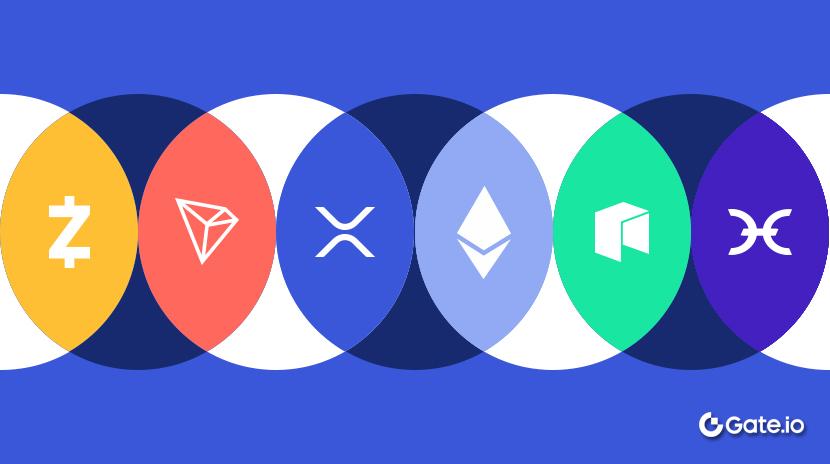Prendre du recul : Fondamentaux Hyperliquid
Les conditions de marché volatiles se traduisent souvent par un volume de transactions plus élevé et, par extension, des frais plus élevés, ce qui rend HYPE plus lucratif pour les investisseurs fondamentaux.Alors que nous faisons face à la vague de ventes sur les marchés des actions et des cryptomonnaies en raison de conditions macroéconomiques périlleuses, je pense qu'il est important de prendre du recul et d'examiner les fondamentaux. L'action des prix à la baisse élimine les traders et offre une opportunité aux nouveaux investisseurs de principe de faire leur entrée. Nous vivons particulièrement cela avec un actif tel que HYPE, étant donné qu'une grande partie de la base de détenteurs sont des traders de contrats à terme perpétuels (en raison de la distribution de largent). Ainsi, les tendances baissières du marché entraînent des appels de marge pour ces traders de contrats perpétuels qui vendent leur HYPE pour couvrir les garanties, ce qui se traduit par une liquidation massive de HYPE sur l'ensemble du marché. En revanche, des conditions de marché volatiles se traduisent souvent par un volume de transactions plus élevé et, par extension, des frais plus élevés rendant HYPE plus lucratif pour les investisseurs de principe.
Ci-dessous, nous discuterons :
- Pourquoi suis-je excité(e) à propos de Hyperliquid aujourd'hui ?
- Une vision à long terme sur Hyperliquid
- Obstacles potentiels
- Un modèle d'évaluation comparative pour HYPE
Pourquoi suis-je excité par Hyperliquid aujourd'hui ?
Je crois qu'un carnet de commandes sur chaîne performant offre une amélioration par paliers par rapport aux paradigmes existants. Les places de marché sont censées être un point de rencontre pour les investisseurs sur un pied d'égalité, mais les marchés d'aujourd'hui sont conçus pour les institutions et les firmes de HFT dès le départ. Les carnets de commandes sur chaîne changent cela, et Hyperliquid offre les moyens de le faire.
Dans la finance traditionnelle, les sociétés HFT paient plusieurs millions pour rapprocher leurs serveurs d'un pouce des serveurs du marché boursier, tandis que les utilisateurs indépendants doivent payer plusieurs milliers de dollars pour mettre en place et maintenir des serveurs de co-localisation personnels. De même, les bourses de crypto centralisées créent des marchés inégaux en concluant des accords internes de création de marché et une co-localisation préférentielle des serveurs. En revanche, en permettant l'accès au flux de commandes via des carnets de commandes on-chain, Hyperliquid offre à quiconque la possibilité de mettre en place sa propre Citadelle et Jane Street pour un coût pratiquement nul. De plus, les SDK puissants et faciles à utiliser d'Hyperliquid permettent une intégration facile pour les utilisateurs non natifs de la cryptographie pour essayer des stratégies.
Alors que les utilisateurs ne surpasseront probablement pas Wintermute en matière de création de marché, ils ont au moins une chance égale, alors que les paradigmes existants ne leur permettent même pas de monter sur le terrain. De plus, les utilisateurs peuvent tirer parti du coffre-fort de création de marché natif de Hyperliquid, HLP, et gagner un confortable ~10-20% APY sur leur dollar.
À travers ce qui précède, Hyperliquid crée des marchés équitables. En particulier, je suis excité par les choses suivantes à venir pour Hyperliquid :
- BTC/SOL/ETH non-custodial et les applications associées: Les gens veulent un lieu on-chain pour échanger et emprunter contre leur BTC. À travers @hyperunit, Hyperliquid offre l'un des moyens les plus simples de relier votre BTC à une plateforme on-chain. Hyperliquid permet un règlement à faible latence pour les stratégies de trading à travers les offres au comptant et les contrats perpétuels sur la même plateforme. Ainsi, je suis impatient de voir des cas d'utilisation tels que les échanges à terme spot on-chain, la couverture delta spot et le règlement en temps réel des positions d'options.
- Actions et autres actifs pondérés en fonction du risque + backend Hyperliquid/ frontend TradFi : L'équipe Unit est censée mettre en place des solutions pour intégrer des actions et des actifs pondérés en fonction du risque dans le carnet d'ordres Hyperliquid. Bien que je m'attende à une demande on-chain pour cela, je suis plus enthousiaste à l'idée de voir des cas d'utilisation où Hyperliquid sert de blockchain et de rails de liquidité pour offrir des opportunités autrement inaccessibles aux marchés émergents. Par exemple, il ne serait pas farfelu de supposer que des actions AAPL soient proposées aux marchés non américains via une interface utilisant le carnet d'ordres Hyperliquid en coulisse et masquant la partie "blockchain" de l'expérience d'intégration pour l'utilisateur final.
- BTC et HYPE en garantie : Actuellement, Hyperliquid ne permet que l'utilisation de l'USDC comme garantie pour les contrats perpétuels. Nous constatons que le BTC et le HYPE sont proposés comme garantie pour les contrats perpétuels, ce qui pousse les traders à liquider leurs actifs en cas d'appels de marge. L'offre de BTC et de HYPE peut permettre de réduire la pression vendeuse et d'améliorer l'efficacité du capital.
- Native USDC : Hyperliquid propose actuellement USDC bridé sur Arbitrum. Ainsi, il n'est pas possible de le convertir en dollars sans le rebrider sur Arbitrum, car il est bloqué dans un contrat intelligent. De plus, l'USDC bridé n'est pas compatible avec CCTP. Par conséquent, avec le déploiement de l'USDC natif, Hyperliquid débloquera plus d'efficacité en capital. Pour en savoir plus sur la nécessité de l'USDC natif ou d'une autre devise stable native sur Hyperliquid, lisez @0xBrozepost de ‘s ici: https://x.com/0xBroze/status/1896935589309567031
- Les marchés du prêt en direct : entraîneront plus d'activité car les détenteurs de largage HYPE peuvent désormais emprunter contre leur HYPE et devenir des participants de marché plus actifs. Ici, je suis excité de voir des protocoles de prêt tels que @felixprotocolentre autres à devenir opérationnels.
- Intégration directe : Solutions telles que @HanaNetworkvous permet de vous connecter/déconnecter directement depuis Apple Pay, PayPal, Wise, la carte de débit. Réduire le frottement de l'intégration entraînera une augmentation de l'activité.
- Amener les utilisateurs non-crypto sur la chaîne : Hyperliquid est la première application crypto que plusieurs de mes amis non-crypto ont commencé à utiliser. La plupart d'entre eux ont été intégrés à travers @pvp_dot_tradeoù nous avons participé à des compétitions de trading les uns avec les autres. Même après le programme de points, ils restent des utilisateurs fidèles.
Vue à long terme de l'horizon temporel
Basé sur les facteurs ci-dessus, je vois Hyperliquid devenir un aimant de liquidité puissant. Comme nous l'avons vu plusieurs fois dans la cryptographie, la liquidité engendre la liquidité. En tant que tel, je vois Hyperliquid devenir le principal hub de trading et de liquidité pour toute activité on-chain.
Comme discuté ci-dessus, le BTC natif non-custodial débloquera un nouvel ensemble d'opportunités à l'intersection d'un CLOB performant et de la liquidité BTC. Cela se traduira par une liquidité plus profonde pour le CLOB lui-même, les AMM sur l'EVM et les pools de prêts. Dans une certaine mesure, nous pourrions également assister à la migration de spot ETH/SOL + autres alts vers Hyperliquid. Cela volera des parts de marché aux DEX sur d'autres chaînes et tarira ces carnets de commandes et pools de liquidité.
Je pense également qu’Hyperliquid sera en concurrence avec les CEX pour les cotations de jetons. C’est déjà évident à travers des projets tels que Swell et Plume qui achètent des tickers sur Hyperliquid. L’achat d’un ticker sur Hyperliquid vous donne accès à la liquidité d’Hyperliquid. Étant donné que les enchères ont lieu toutes les 31 heures, il ne peut y avoir que ~282 enchères au cours d’une année donnée. Au fur et à mesure qu’Hyperliquid deviendra la plate-forme de trading on-chain de facto, le « tickerspace » deviendra de plus en plus cher, mais restera probablement moins cher que de donner à Binance 5% de votre offre de jetons. Si Hyperliquid s’exécute en tant que centre de liquidité, je pense que nous pouvons nous attendre à des enchères moyennes de ~500 000 $.
Enfin, comme mentionné ci-dessus, je pense que les applications backend/Retail frontend Hyperliquid apporteront des opportunités financières autrement inaccessibles aux marchés non américains et débloqueront la liquidité des segments d'utilisateurs actuellement intouchés par les crypto-monnaies.
Obstacles potentiels
- Pression réglementaire : Hyperliquid n'est pas aligné sur le MAGA alors que plusieurs autres chaînes ont cédé aux politiciens de DC. Cela est bien illustré par les achats de jetons World Liberty Finance. De plus, plusieurs VC sont des investisseurs dans des chaînes et des DEX concurrents à partir desquels Hyperliquid vole de la liquidité et de l'attention et se sont montrés très critiques envers la légitimité réglementaire d'Hyperliquid depuis ses débuts. Hyperliquid n'a pas de voix aussi forte aux États-Unis et il ne serait donc pas surprenant de voir une certaine pression réglementaire de ce côté.
- Déploiement de l'EVM : La version alpha de l'EVM d'Hyperliquid n'a pas été exécutée avec la même qualité que HyperCore. Des limites de gaz faibles, des temps de blocs parfois lents, l'absence de USDC native entre autres ont conduit à un déploiement plus lent des applications sur le HypeEVM. En conséquence, des améliorations sont nécessaires et devraient être déployées prochainement. De plus, si les applications EVM ne sont pas en mesure d'offrir de nouvelles applications nettes ou si elles observent un faible TVL/volume, nous pourrions assister à une perte de parts de marché et, par extension, de TVL vers d'autres L1/L2 comme Monad, MegaETH. Cependant, d'après mes conversations avec les développeurs, l'équipe d'Hyperliquid travaille activement avec les applications pour obtenir des retours sur l'HyperEVM et met en œuvre des améliorations avec des retours extrêmement rapides.
- Réseau de validateurs : Alors que Hyperliquid se dirige vers un système de validateurs sans permission, les détails exacts de ce que font les validateurs sont obscurcis par un binaire opaque. Pour devenir un hub sécurisé de liquidité grâce à une véritable décentralisation, Hyperliquid devrait devenir plus transparent au fil du temps sur les opérations des validateurs.
Un modèle de valorisation comparative pour HYPE
Ci-dessous, j'essaie de projeter une analyse P/E simple pour le jeton natif de Hyperliquid, HYPE, pour les quatre prochaines années.
Je pense qu'il est important de mener cette analyse dans le contexte de la compréhension des effets des rachats du Fonds d'Assistance. Inspiré par @Keisan_Crypto's analyse, nous introduisons le concept de la Valeur Nette Ajustée où la Valeur Nette Ajustée = Prix * Offre Totale Ajustée Diluée. Ici, nous définissons l'Offre Totale Ajustée Diluée pour l'année suivante comme l'Offre Totale Diluée pour l'année précédente - Rachats AF - Brûlure
Pour ceux qui ne sont pas familiers avec le Fonds d'assistance, les frais collectés sur Hyperliquid sont dirigés vers le Fonds d'assistance, qui achète HYPE sur le marché ouvert, réduisant ainsi l'offre. Aux fins de cette analyse, nous supposerons que le HYPE racheté par le Fonds d'assistance ne retournera jamais sur le marché ouvert et est assimilé à une destruction.
Hyperliquid a trois grandes sources de revenus : Frais de trading, Frais EVM et Frais d'enchères.
Remarque : Nous effectuons les calculs ci-dessous en supposant que le prix du jeton HYPE = $15.
Les frais de trading sont perçus lorsque les utilisateurs ouvrent et ferment des positions perps. Pour projeter les frais de trading annuels de Hyperliquid, j'ai d'abord obtenu les revenus hebdomadaires pour les 12 mois allant du 23 décembre au 10 mars. Nous avons ensuite annualisé la moyenne hebdomadaire roulante sur 4 semaines huit fois pour obtenir une estimation équilibrée des frais de trading. En conséquence, j'estime que Hyperliquid devrait collecter environ 600 millions de dollars de frais de trading pour 2025.

Cependant, bien que cela serve de proxy décent pour l'année 2025, il est difficile d'extrapoler les taux de croissance annuelle pour 2025-2028 à partir de cette méthode. En tant que tel, nous nous tournons vers le volume de trading perps historique lissé sur les bourses centralisées et postulons que Hyperliquid capturera une certaine part du volume total des bourses centralisées. Cela nous permet de mieux capturer la nature cyclique des volumes d'échange en crypto. Nous supposons ensuite que la part de pourcentage de Hyperliquid pour chaque année se situe dans une certaine fourchette pour une année. Appliquer simplement une part de marché de 5% pour une année donnée pourrait généraliser jusqu'au point d'erreur. Ainsi, nous supposons que pour 2025, Hyperliquid capture entre 3 et 6% du volume et encadrons la capture du volume comme 3% + [(6%-3%) * RAND()]. Cette analyse basée sur la plage randomisée offre une image plus réaliste de la capture mensuelle du volume. De plus, en supposant que les frais moyens de Hyperliquid s'élèvent à 0,025% du volume de trading, nous pouvons conclure que Hyperliquid gagnera environ 600 millions de dollars de frais de trading en 2025. Nous constatons que ce chiffre est proche de notre méthode moyenne roulante de 4 semaines précédente ci-dessus, ce qui nous permet de renforcer nos conclusions.
En avançant avec l'analyse de la capture du volume, nous supposons que la part de marché de Hyperliquid augmente au fil des ans. Ainsi, nous supposerons que Hyperliquid capture 3-6% en 2025, 6-8% en 2026, 8-10% en 2027 et 10-12% en 2028. Nous résumons nos résultats ci-dessous.


Nous estimons les frais EVM en fonction des revenus annuels d'autres L2 tels que Base. Compte tenu d'une combinaison de la naissance de HypeEVM et des frais de gaz intrinsèquement plus bas, je m'attends à ce que HypeEVM capture 50 % des revenus annuels de Base en 2024. Ainsi, j'estime que Hyperliquid devrait collecter environ 54 millions de dollars de frais EVM pour 2025.
Enfin, comme mentionné précédemment, Hyperliquid organise une enchère pour les tickets de son marché au comptant. Pour estimer les revenus des ventes de tickets, nous devons d'abord réfléchir à la distribution des prix des tickets eux-mêmes. Après avoir analysé les données précédentes et conformément à notre thèse sur l'espace des tickets précédemment, je pense qu'une distribution normale est suffisante pour cartographier les prix aux enchères pour une année. Les chiffres ci-dessous représentent la distribution et les revenus de chaque segment de prix. En conséquence, j'estime qu'Hyperliquid devrait collecter environ 40 millions de dollars de frais d'enchères pour 2025.


Cela implique qu'en 2025 seulement, Hyperliquid collectera environ 700 millions de dollars de frais. Étant donné que la plupart des frais devraient être dirigés vers le Fonds d'assistance pour racheter du HYPE, cela se traduit par 700 millions de dollars de pression d'achat pour le HYPE en 2025 uniquement provenant du Fonds d'assistance.
En supposant que le HYPE détenu par le Fonds d'assistance est similaire à être brûlé (ne rentrera jamais sur le marché) avec les 176 113 HYPE projetés brûlés des frais de transaction sur HyperCore, environ 46 millions de jetons HYPE seront retirés de la circulation en 2025.
Ainsi, à mesure que les frais augmentent et l'offre diminue, le ratio P/E de HYPE diminue au fil des ans, ce qui en fait un actif plus précieux avec le temps. De plus, cette suppression régulière de HYPE de l'offre aide également à mieux absorber les déblocages de jetons de la Fondation Hyper, de l'équipe, et des futures émissions et récompenses communautaires.
Nous supposerons que les frais de l'EVM et des enchères suivent globalement le même taux de croissance annuel que les frais de trading. Cela nous permet de compiler notre bilan financier final que nous présentons ci-dessous :

Enfin, nous comparons et contrastons le ratio P/E de HYPE basé à la fois sur son P/E FDV et son P/E de capitalisation boursière par rapport à des concurrents tels que Solana et Ethereum, des actions similaires telles que Coinbase et Robinhood, et des actifs TradFi tels qu'Apple, Nvidia et le S&P 500.

PS: Une note sur la communauté Hyperliquid
J'ai souvent écrit sur la communauté Hyperliquid sur Twitter, donc je n'insisterai pas beaucoup ici car cela détourne de l'objectif principal de cet article, mais je tiens simplement à partager cet extrait d'un tweet précédent qui, pour moi, résume vraiment la communauté Hyperliquid.
“gagner de l'argent ou en perdre, je repars avec de nouvelles amitiés. Hyperliquid est la première application crypto à me permettre cela, et pour moi, c'est une fonctionnalité très importante.”
Si vous êtes intéressé à lire davantage de mes réflexions sur la communauté Hyperliquid, n'hésitez pas à le faire ici :


En ce qui concerne les communautés, il serait négligent de ne pas mentionner @HypioHLqui a vraiment fait un travail incroyable en créant des communautés puissantes autour des NFT (jamais pensé que je finirais par dire cela).
En se quittant,
Prenez du recul, détendez-vous et profitez du voyage (et ne vous faites pas couper et vendez votre battage pour couvrir la marge).
Merci à @Keisan_Cryptopour avoir inspiré le cadre de valorisation. Merci à @0xBroze @rpal_ @0xDuckworthpour offrir des suggestions et relire !
Avertissement :
- Cet article est repris de [STEPVikram Singh]. Tous les droits d'auteur appartiennent à l'auteur original [Vikram Singh]. Si des objections sont formulées à cette réimpression, veuillez contacter le Gate Learnéquipe, et ils s'en occuperont rapidement.
- Clause de non-responsabilité : Les points de vue et opinions exprimés dans cet article sont uniquement ceux de l'auteur et ne constituent aucun conseil en investissement.
- L'équipe Gate Learn réalise des traductions de l'article dans d'autres langues. Copier, distribuer ou plagier les articles traduits est interdit sauf mention contraire.
Articles Connexes

Comment faire votre propre recherche (DYOR)?

Qu'entend-on par analyse fondamentale ?

Top 10 Plateformes de trading de jetons MEME

Qu’est-ce que l’analyse technique ?

Que sont les Altcoins ?
